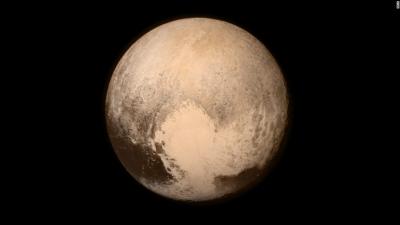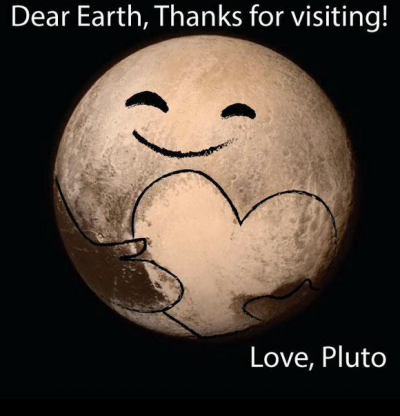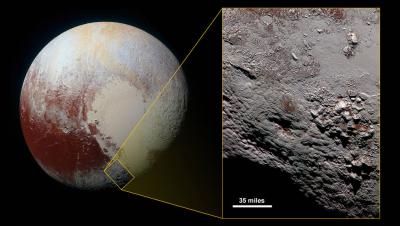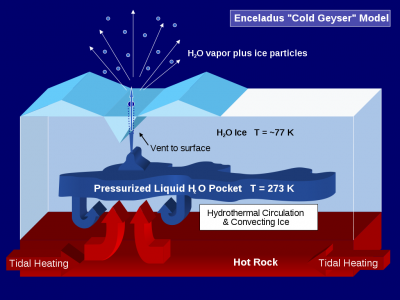It’s not often we get new news of volcanoes from our solar system. Quite a lot of what we know has been collected over several voyages of spacecrafts in the 90’s and early 2000’s. But we’re in luck! The most recent trip of the New Horizons spacecraft that flew by Pluto sent us several gorgeous photos of our little dwarf planet at the furthest reach of our solar system. One of the most famous photos includes what looks like a heart shape, which resulted in it being dubbed “From Pluto with Love”.


A closer look at this image, however, as has been analyzed by NASA scientists, shows that the surface of Pluto has some really unusually long mountain ranges (hundreds of miles long). "Ice volcanoes?," propose some scientists. Maybe!

So, what’s an ice volcano? Unlike a normal volcano that spouts out hot, molten rock in the form of lava, ice volcanoes, otherwise known as cryovolcanoes, erupt volatiles, such as methane gas, water, carbon dioxide, and ammonia. These volatiles can be in the form of liquids or vapour (these volatiles are known by a really cool term known as ‘cryomagma’) and solidify on the surface of the moons at really low temperatures.
The jury is still out on the identification of the mountain ranges. The two mountains look like shield volcanoes, with craters at the peak, and have been informally named Wright Mons (in honor of the Wright brothers) and Picard Mons. Wright Mons measures 150 km long and 4 kilometers high, and if it is identified as an ice volcano, will be the largest ice volcano in our solar system!
Other ice volcanoes in our solar system have been spotted on Triton (Neptune’s moon), Europa, Titan, Ganymede (Jupiter’s moons), Enceladus (Saturn’s moon), and Miranda (Uranus’ moon).

Figure above: Icy moons of the planets of our solar system. Triton (Neptune’s moon), Europa, Titan, Ganymede (Jupiter’s moons), Enceladus (Saturn’s moon), and Miranda (Uranus’ moon) (Image from NASA)
Why do ice volcanoes matter so much? Firstly, if ice volcanoes are present, and the surrounding crust looks relatively undeformed, it implies that the moon has been recently volcanically active. Secondly, if ice volcanoes are present, it means there is heat inside that is being generated to form the volcano in the first place. Combining all this information provides us with the ability to make smart inferences of the geological processes that form the moon.

This is why a possible discovery of such a large ice volcano on Pluto is a big deal! If we can identify the features on Pluto’s surface, and any ice volcanoes, we are one step closer to understanding how Pluto formed, and how Pluto’s formation is geologically linked to the formation of the other planets in our solar system.